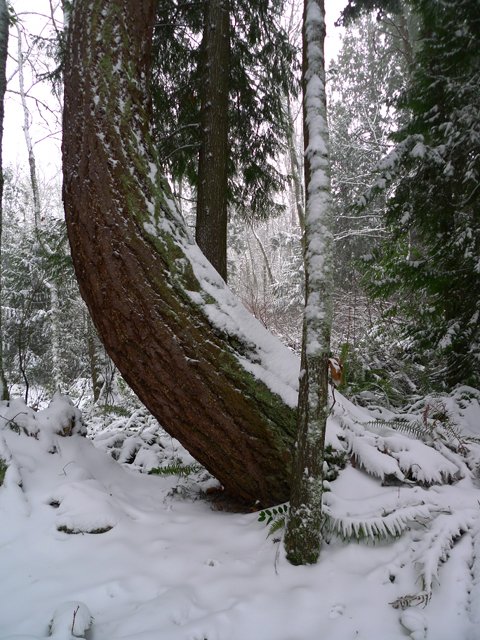Another Winter Storm
Published at 17:35 on 18 January 2012

The forecasters really couldn’t make up their minds on this one. First it was supposed to be the storm that ends this current cold spell by dragging the normal mild marine air back. Then, it was supposed to start as snow but turn to mild rain and end the cold spell anyhow. Then the amount of initial snow went up to amounts that would create a slushy mess when the rain came. Then it was supposed to be all snow, huge amounts of it.
Those huge amounts of snow went south (Chehalis, a lowland town that gets no more snow on average than Seattle does, got a whopping 17 inches). We ended up with a little over 4 inches here in West Seattle, still a very significant accumulation for the lowlands.
It all wound up as forecast around 2PM. Or so I thought. I woke from the nap I took after my walk in the woods, and looked out at a puzzling sight: tiny little drops on the outside of the window, a haze in in the distance as if it was still snowing, but no flakes falling and no evidence of the least bit of melting.
I went outside and the mystery was solved: the leaves on the laurel bush out front were becoming glazed with ice. Freezing drizzle. It’s sundown and there’s now a distinct crust on the snow, and the tree branches are making that creaking sound in the wind that they do when encrusted.
Up until this week, I had been worried that this was going to be a dud of a La Niña winter. No longer.


